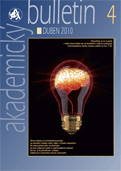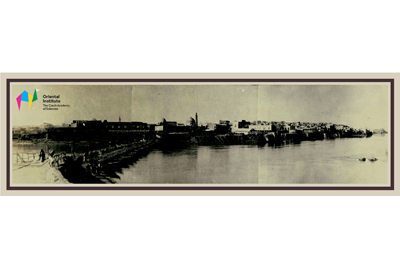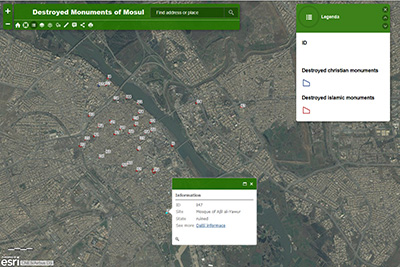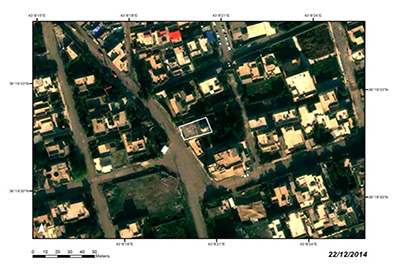public non-university research institution, which comprises a system of scientific institutes. It conducts its activities in accord with Act No. 283/1992 Coll., On The Czech Academy of Sciences (CAS), and other legal regulations. Research conducted by the CAS endeavours to advance knowledge on an international scale while however respecting the current needs of Czech society. The supreme autonomous body of the CAS is the Academy Assembly. The executive body of the CAS is the Academy Council with the President of the CAS at its head. Its permanent advisory body is the Council for Sciences, which deals with the scientific policy of the CAS. These all-academic bodies are always elected for four-year periods.
Analysis of satellite imagery reveals the unprecedented scope of destruction of historical monuments in Mosul
25 Feb 2016
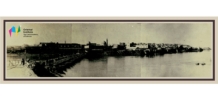
In reaction to serious threats to the Mosul architectural sites from ISIS (Daesh), a team of Czech scientists from the Oriental Institute of the Czech Academy of Sciences in Prague, has launched the project "Monuments of Mosul in Danger". The aim is to document and research Mosul architectural sites that have been destroyed by this terrorist organization since June 2014. As the first output of the project the team has released an interactive map of monuments destroyed thus far, which was created through analysis of satellite imagery.
Partnership of top scientists from the Academy and members of the European Parliament
12 Feb 2016
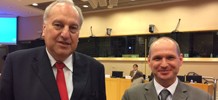
A meeting of top European scientists with members of the European Parliament (EP) was held in Brussels, January 25 – 27, 2016 (so-called Brussels week). One of the selected scientists, Mgr. Martin Friák, Ph.D., from the Institute of Physics of Materials in Brno, was chosen for scientific advising by member of EP Ing. Evžen Tošenovský, dr. h. c., who is the vice chair of the Science and Technology Options Assessment panel of the EP. Doctor Friák got acquainted with the important role played by science in the legislative processes of the EP, e.g. via the European Parliamentary Research Service. Member of EP Tošenovský was interested in the development of new materials and doctor Friák introduced him the new strategy of the Czech Academy of Sciences Strategy 21. The meeting laid the foundation for their long-term cooperation.
Bats in Eurasia tolerate a disease deadly in North America
29 Jan 2016
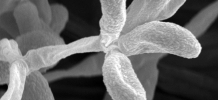
Czech White-Nose Syndrome Team together with international collaborators discovered that mechanisms of tolerance protect Palearctic bats from white-nose syndrome (WNS), the disease that caused mass die-off in North America. The discovery provides hope for the future of bats in North American ecosystems.
New Concept for Digital Data Storage
14 Jan 2016
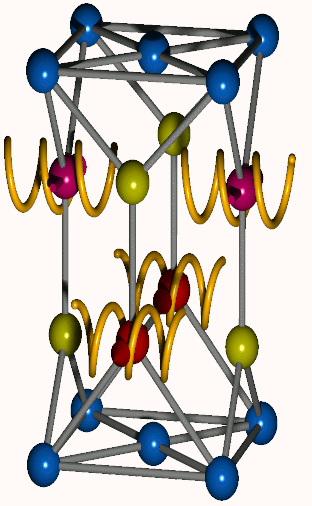
International research team demonstrates electrical switching of an antiferromagnet
Ferromagnets and antiferromagnets are the two common forms of magnetically ordered materials. Traditionally we thought that magnetism can be easily controlled and utilized only in ferromagnets. Researchers from the Czech Republic, United Kingdom, and Germany change this perception by demonstrating electrical switching of magnetization in an antiferromagnetic microchip. The work was published online by the journal Science on 14 January 2016 (DOI: 10.1126/science.aab1031).
Workshop on natural hazards attracted sixty experts to the Academy of Sciences, Prague
8 Dec 2015
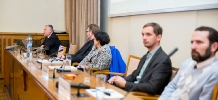
More than sixty experts from the Czech Republic attended workshop held in the main building of the Czech Academy of Sciences in Prague on 3. 12. 2015. It was dedicated to appealing topic of “Natural hazards around us – opinions of European experts on natural and social environment changes”. The audience included not only experts from field of Earth Sciences but also professionals from civil protection, local governments, private companies and member of the Senate of the Parliament of the Czech Republic. The lecturers were focused on landslides, debris flows, rock falls and their negative impacts on society.
Klára Benešovská was awarded the Knight of the Order of Merit of the Grand Duchy of Luxembourg
23 Nov 2015

The art historian PhDr. Klára Benešovská, CSc., Head of the Department of Mediaeval Art at the Institute of Art History of the Czech Academy of Sciences, was made a Knight of the Order of Merit of the Grand Duchy of Luxembourg (Chevalier de l’Ordre de Mérite du Grand-Duché de Luxembourg) in Prague, on the premises of the Embassy of the Grand Duchy of Luxembourg in the Czech Republic, Estonia and the Ukraine, on Wednesday, 18 November, 2015. The order of knighthood was conferred by Henri, Grand Duke of Luxembourg and Duke of Nassau, and Dr. Benešovská received it at the hands of Her Excellency Michèle Pranchère-Tomassini, Ambassador of the Grand Duchy of Luxembourg.
AugerPrime Inauguration
16 Nov 2015
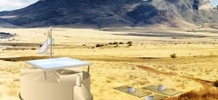
Celebrating 15 years of achievements and signature ceremony of a new International Agreement for the next 10 years
During November 14-17, 2015, the Pierre Auger Collaboration celebrates the inauguration of AugerPrime. Spread over an area of 3000 km2 in the 'yellow pampa' in western Argentina, Auger is the largest cosmic ray experiment in the world. AugerPrime allows the Czech researchers to contribute to discerning the mysteries of ultrahigh energy cosmic rays until 2025.
Institute of Physics received two of four awards of the Technology Agency in 2015
16 Nov 2015
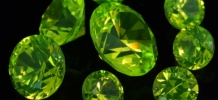
The prestigious prizes of the Technology Agency of the Czech Republic for the best projects accomplished in applied research in 2015 were awarded at the official ceremony in the New building of the National Museum in Prague on October 22nd, 2015. Among four award-winning projects there were two projects that included teams from the Institute of Physics of the Czech Academy of Sciences (CAS).
The Czech Academy of Sciences 2014-2015: Selected Research Results
21 Oct 2015
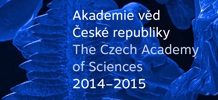
The Czech Academy of Sciences has issued a report accounting selected research results achieved by its scientific institutes in all research areas in 2014 and in early 2015. It outlines its research activities, as well as goals of the new research centres and facilities of the CAS and its new Strategy AV21, the main aim of which is to perform top level multilateral interdisciplinary research reflecting the needs of contemporary society. The book (printed version in PDF) documents the CAS´s efforts to transfer research findings into practical outputs and its co-operation with partners in the industrial sphere, it presents the CAS´s co-operation with various institutions on international, regional and local levels and mentions some of the major social events and anniversaries marked by the CAS in 2014 and 2015.
American psychologist Prof. Philip G. Zimbardo received the highest award of the Czech Academy of Sciences
5 Oct 2015
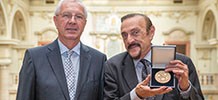
Three professors from the Czech Academy of Sciences on the List of the Most Cited Scientists of the World
5 Oct 2015
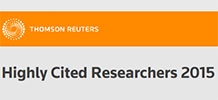
Conference on Democracy (not only) in Muslim Countries
5 Oct 2015
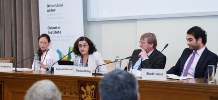
New possibilities of imaging molecules with atomic force microscope
6 Aug 2015
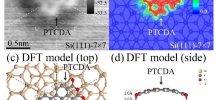
Scientists from the Institute of Physics of the Czech Academy of Sciences (CAS) together with colleagues from Osaka University in Japan presented in the journal Nature Communications [1] a new method that significantly advances the current possibility for atomic force microscopes to image chemical structures of individual molecules. Recent developments in scanning microscopy enable us to resolve the chemical structure of individual molecules deposited on surfaces. The sub-molecular resolution of individual molecules opens up entirely new possibilities in the study of physical and chemical properties of molecular nanostructures. However, it was possible to carry out these measurements only at very low temperatures close to absolute zero with specially modified microscope tips.



